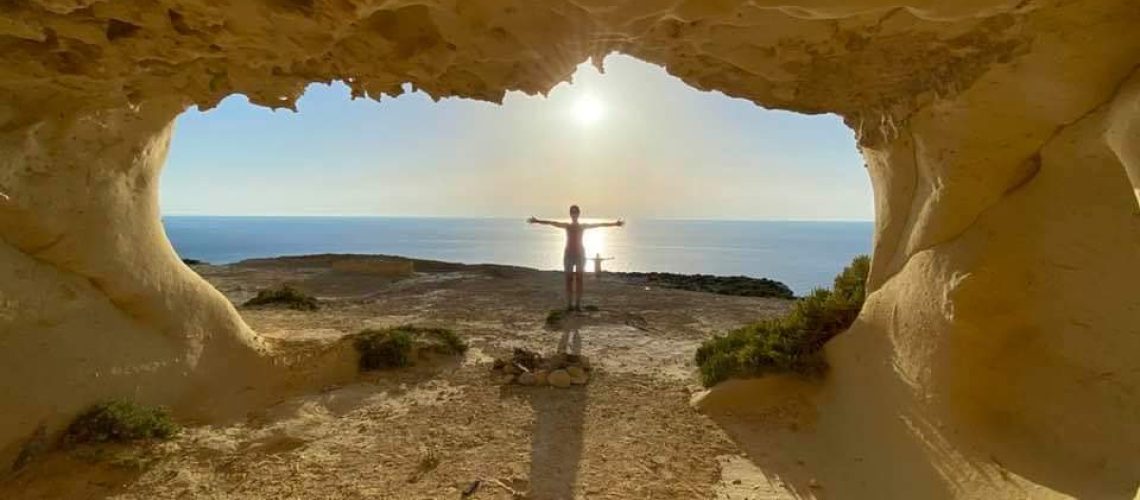Last week, we took a picnic to Gozo’s Punic Temple, a lesser known beauty spot with a long history. We were welcomed by the quacking of ducks as we parked up at L-Ghadira ta Sarraflu, otherwise known as The Duck Pond. It’s a pretty natural freshwater pond year-round and home to the Painted Frog (Discoglossus pictus), Gozo’s only indigenous amphibian, a species well-adapted to the semi-arid environment. A long-term resident on Malta – as evidenced by semi-fossilized bones at Ghar Dalam in Birżebbuġa – this frog developed the ability to survive long periods without water by aestivating, a summer version of hibernating, from which they can emerge within just hours of rain.
From the pond we followed a path along the edge of the high cliffs on the Ras il-Wardija promontory on Gozo’s south-western edge, an area that was probably first inhabited in the Bronze Age (c 1500BC): here, fifteen minutes from the road, we found the Punic Temple, a golden cave dating back to the 3rd century BC, with niches carved into its walls and several big water holes or wells carved into the ground in front.
The Significant Other and I were shown the way by a couple of friends, one of whom scampered and scoured every inch of the island as a Gozitan child. He recalled coming to the spot when it had only recently been excavated by Italian archaeologists in the mid-late 1960s. He described how, in the early 1970s, steps in front of the cave led down into an underground complex of chambers, that are now re-sealed, although stamping on the ground you may be able to hear the hollows below. (Apparently. I couldn’t.) Back then, one of the ancient niches housed a stone on which a human figure was carved in the shape of a cross: she is thought to be Tanit, the Punic and Phoenician goddess, the chief deity of Ancient Carthage (who over time became the Roman Godess of war, Juno). The stone was stolen however, so local story tells, during filming by a French crew in the 1990s, but after an appeal in which its historical value was made clear, she was returned. She now resides in the Gozo’s Museum of Archeology, from which she no longer enjoys spectacular daily views of the sunset. We however toasted Tanit and her temple as the stunning panoramas over Dwejra Bay and Fungus Rock slipped from a gold, pink and red into night. And on our return to the car, Mars, Saturn, and Jupiter – all visible to the naked eye – heralded a night of twinkling stars, the lights of Malta lining a far horizon through the dark.
The photo: The Significant Other and I, by David Pace.




